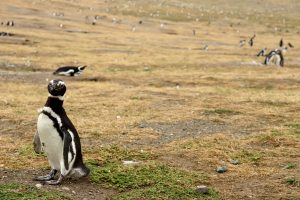Hey there, friends! In our exploration of the bustling life around us, we often overlook the delicate balance that sustains our planet’s immense variety of species. In the article “What Are The Biggest Threats To Biodiversity?”, we dive into the pressing dangers that jeopardize this precious balance. From habitat destruction and climate change to pollution and invasive species, we’ll uncover how our actions are impacting the very fabric of life on Earth and what we can do to safeguard it for future generations. Let’s get started! Have you ever wondered what the biggest threats to biodiversity are? Biodiversity, the variety of life in the world or in a particular habitat or ecosystem, is essential for the stability and resilience of our environment. It sustains human life by providing us with resources like food, medicine, and clean water. However, biodiversity is under significant threat from various human activities and natural occurrences. In this article, we will explore these threats in depth and discuss their impact on both the environment and human life.

What Is Biodiversity?
Biodiversity refers to the variety and variability of life on Earth. It encompasses all living organisms, including plants, animals, fungi, and microorganisms, as well as the ecosystems they form. The concept covers three main levels:
Genetic Diversity
Genetic diversity includes the variety of genes within a species. This allows populations to adapt to changing environments and helps ensure the survival of species.
Species Diversity
Species diversity refers to the number of different species within an ecosystem or the entire planet. It is often measured in terms of species richness (the number of species) and species evenness (the relative abundance of each species).
Ecosystem Diversity
Ecosystem diversity refers to the variety of ecosystems in a particular area. Different ecosystems support different communities of organisms, each contributing to overall biodiversity.
The Importance of Biodiversity
Biodiversity plays a fundamental role in maintaining ecological balance and supporting life on Earth. Here are some key reasons why biodiversity is crucial:
Ecological Balance
Biodiversity helps to maintain the balance of ecological processes such as nutrient cycling, soil formation, and oxygen production. It ensures that ecosystems continue to function effectively.
Food Supply
A diverse range of species provides a variety of food resources for humans. Our diets are enriched by the wide array of plant and animal species that we rely on for nutrition.
Medical Resources
Many medicines are derived from plant and animal species. The loss of biodiversity could mean the loss of potential cures for diseases and health conditions.
Economic Benefits
Biodiverse ecosystems support industries such as agriculture, forestry, and tourism. The economic benefits of biodiversity are immense and contribute significantly to global economies.
Cultural Significance
Biodiversity has cultural, aesthetic, and spiritual importance for many communities around the world. It enhances our quality of life and contributes to our well-being.

Major Threats to Biodiversity
Despite its importance, biodiversity is facing unprecedented threats from human activities and natural events. Let’s delve into the major threats that are putting biodiversity at risk.
Habitat Destruction
Habitat destruction is one of the most significant threats to biodiversity. It’s caused primarily by human activities such as deforestation, urbanization, and agriculture. When habitats are destroyed, species lose their homes and resources, leading to population declines or extinctions.
Key Factors of Habitat Destruction:
| Factor | Description |
|---|---|
| Deforestation | Clearing forests for timber, agriculture, or urban development |
| Urbanization | Expanding cities and infrastructure |
| Agriculture | Converting natural landscapes into farmland |
| Mining | Extracting minerals and resources from the earth |
Climate Change
Climate change, driven by human activities like burning fossil fuels and deforestation, is affecting biodiversity on a global scale. Changes in temperature, precipitation patterns, and sea levels can alter habitats and the availability of resources, making it difficult for species to survive.
Impacts of Climate Change:
| Impact | Description |
|---|---|
| Temperature Increases | Affects species metabolism and breeding cycles |
| Altered Precipitation | Changes water availability and affects plant growth |
| Rising Sea Levels | Submerges coastal habitats, affecting marine and terrestrial species |
| Ocean Acidification | Affects marine life, particularly organisms with calcium carbonate shells |
Overexploitation
The overexploitation of natural resources, such as overfishing, hunting, and logging, is another significant threat to biodiversity. Overexploitation depletes populations faster than they can recover, leading to declines or extinctions.
Examples of Overexploitation:
| Activity | Description |
|---|---|
| Overfishing | Depleting fish populations faster than they can reproduce |
| Hunting | Targeting wildlife for bushmeat, trophies, or traditional medicine |
| Logging | Extracting timber without sustainable practices |
| Wildlife Trade | Trading species for pets, skins, or medicinal purposes |
Pollution
Pollution from industrial, agricultural, and urban sources can severely impact biodiversity. Contaminants like pesticides, plastics, heavy metals, and oil spills can poison ecosystems and harm or kill many species.
Types of Pollution:
| Type | Description |
|---|---|
| Chemical Pollution | Pesticides, herbicides, and industrial chemicals that harm organisms and ecosystems |
| Plastic Pollution | Accumulation of plastic debris in oceans and other habitats, affecting marine life |
| Air Pollution | Emission of harmful gases and particulate matter from vehicles, factories, and agriculture |
| Water Pollution | Contamination of water bodies by urban runoff, industrial discharge, and marine pollution |
Invasive Species
Invasive species are non-native organisms that spread rapidly and outcompete native species for resources. They can disrupt ecosystems, leading to a decline in biodiversity. Human activities such as trade and travel often introduce invasive species to new environments.
Notable Invasive Species:
| Invasive Species | Impact |
|---|---|
| Asian Carp | Competes with native fish in North American rivers |
| Zebra Mussels | Clogs water intakes and disrupts aquatic ecosystems |
| Kudzu | Overgrows and smothers native plants in the southern United States |
| Cane Toad | Poisonous to native predators in Australia |
Disease
Emerging diseases can also pose a significant threat to biodiversity. Diseases can spread rapidly through wildlife populations, particularly when animals are stressed due to habitat loss or other environmental pressures.
Examples of Disease Impact:
| Disease | Affected Species | Impact |
|---|---|---|
| Chytridiomycosis | Amphibians | Decline in frog and salamander populations |
| White-nose Syndrome | Bats | High mortality rates in North American bat species |
| Rinderpest | Ungulates (cloven-hoofed animals) | Widespread cattle and wildlife deaths in Africa |
| Colony Collapse Disorder | Honeybees | Large-scale die-offs affecting pollination services |
Addressing the Threats
Conserving biodiversity requires comprehensive efforts at international, national, and local levels. Here are some strategies and actions we can take to address the threats to biodiversity:
Protected Areas
Creating and effectively managing protected areas, such as national parks and nature reserves, can provide safe havens for species and ecosystems. Protected areas help conserve critical habitats and allow species to thrive without human interference.
Sustainable Practices
Adopting sustainable practices in agriculture, forestry, fishing, and urban development can reduce the negative impact on biodiversity. This includes using resources responsibly, minimizing waste, and protecting natural habitats.
Climate Action
Mitigating climate change through reducing greenhouse gas emissions, transitioning to renewable energy, and promoting carbon sequestration can help preserve biodiversity. Climate adaptation strategies can also help species and ecosystems cope with changing conditions.
Pollution Control
Implementing robust pollution control measures, such as regulating industrial emissions, promoting proper waste disposal, and reducing the use of harmful chemicals, can mitigate the negative impacts of pollution on biodiversity.
Invasive Species Management
Preventing the introduction of invasive species through stringent biosafety measures and managing existing invasive populations through eradication or containment efforts can protect native biodiversity.
Conservation Research
Investing in scientific research to better understand biodiversity and the threats it faces can inform conservation efforts. Research can provide valuable insights into species behavior, ecosystem dynamics, and effective conservation strategies.

The Role of Individuals
While large-scale actions and policies are crucial, individual efforts can also make a significant difference. Here are some ways we can contribute to biodiversity conservation:
Support Conservation Organizations
Donating to or volunteering with conservation organizations helps fund important projects and initiatives aimed at protecting biodiversity.
Reduce, Reuse, Recycle
Minimizing waste through the three Rs—reduce, reuse, and recycle—can lessen our environmental footprint and reduce the pressure on natural resources.
Make Sustainable Choices
Choosing sustainably sourced products, such as certified organic foods, responsibly harvested timber, and fair-trade goods, supports practices that are better for the environment.
Advocate for Policy Change
Engaging in advocacy efforts to support environmental policies and legislation can drive systemic change. We can contact our local representatives, participate in campaigns, and raise awareness about biodiversity issues.
Educate and Inspire Others
Sharing knowledge and raising awareness about the importance of biodiversity and the threats it faces can inspire others to take action. Education and outreach can empower communities to participate in conservation efforts.
Conclusion
Biodiversity is vital for the health of our planet and the well-being of all living organisms, including humans. Despite the significant threats posed by habitat destruction, climate change, overexploitation, pollution, invasive species, and disease, there is hope. Through concerted efforts at all levels of society—from international policies to individual actions—we can protect and preserve the incredible diversity of life on Earth.
By understanding the importance of biodiversity and the challenges it faces, we can work together to implement effective conservation strategies. Let’s commit to making a positive impact and ensuring a thriving and resilient planet for future generations. After all, the health of our ecosystems, economies, and cultures depends on the rich tapestry of life that biodiversity provides. Let’s do our part to protect it.



